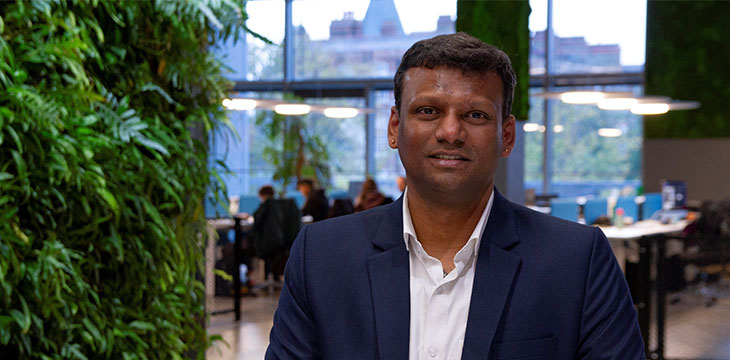|
Getting your Trinity Audio player ready...
|
Central bank digital currencies (CBDCs) are coming—providing digital equivalents to a nation’s cash. But in a world where many countries will be running their own CBDCs, how can they be converted from one currency to another?
That’s the business opportunity that Kumaraguru Ramanujam, CEO of Intrasettle, has spotted and is working to fulfil. He says that Intrasettle will be “a one-stop payment infrastructure that’s instant, highly secure, and cost-effective.”
By hosting multiple CBDCs on a single platform, Intrasettle will help banks and financial institutions to make real-time settlements of cross-border payments. Multiple currencies also allow for greater efficiency in managing fragmented liquidity.
Kumaraguru believes his timing is right. The G20, which accounts for 80% of the world’s GDP and 75% of global trade, is stressing the need for the creation of systems to improve such payments. The international group has agreed that the basis for improving digital payments will be the issuance of CBDCs with an international dimension handled on multilateral platforms.
The holy grail of cross-border payments, says Kumaraguru, is multi-CBDC arrangements on the BSV blockchain—as it is more efficient and cost-effective than rival chains.
Eliminating third parties
A financial market infrastructure where both cash and securities are issued on a blockchain removes third parties, reduces costs and widens access to markets. It also enables a peer-to-peer marketplace along with the ability to scale and manage data, thereby improving resilience and security.
This could become even more powerful with the use of CBDCs as on-chain cash—with the characteristics and capabilities of fiat currency, together with the potential for atomic settlement of a transactions, whether payment- or tokenised-based.
All-in-one product
Intrasettle will allow for high-speed traffic along the whole value chain, from trade to settlement. Distributed nodes will ensure stability as there will be no single point of failure, enhancing operational resilience and reducing systemic risks.
Kumaraguru says his ambition is “to facilitate cross-border payments that are instant, cheap, accessible 24/7 by everyone in the world and settled in a secure settlement medium such as central bank money on a secure and scalable blockchain such as BSV.”
Intrasettle plans to launch its CBDC sandbox tool in December. The company’s CTO, Ramesh Belvadi, says the sandbox provides a suite of pre-built capabilities that serve as a template for central banks, commercial banks and financial institutions to map their CBDC product journey.
Prasanna Lohar, commercial banker and part of Intersettle’s advisory board, says that a common multi-CBDC platform brings efficiency and low cost to a network of direct central banks and commercial participants by providing instant connectivity and finality of settlement.
Sol Enenmioh, Director of Group Digitalisation at HSBC and an adviser to Intrasettle, echoes the sentiment: “a multi-CBDC platform addresses the critical pain points of international payments by advancing cross-border settlement in central bank money. To put it simply, Intrasettle will enable a system that supports the use of local currencies in international transactions.”
To learn more about central bank digital currencies and some of the design decisions that need to be considered when creating and launching it, read nChain’s CBDC playbook.
CoinGeek followed the inside story of Block Dojo’s first cohort for a CoinGeek Originals film, How to Build a BSV Business.

 12-31-2025
12-31-2025 




